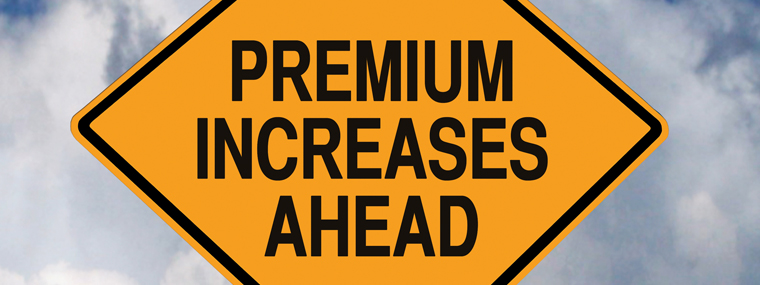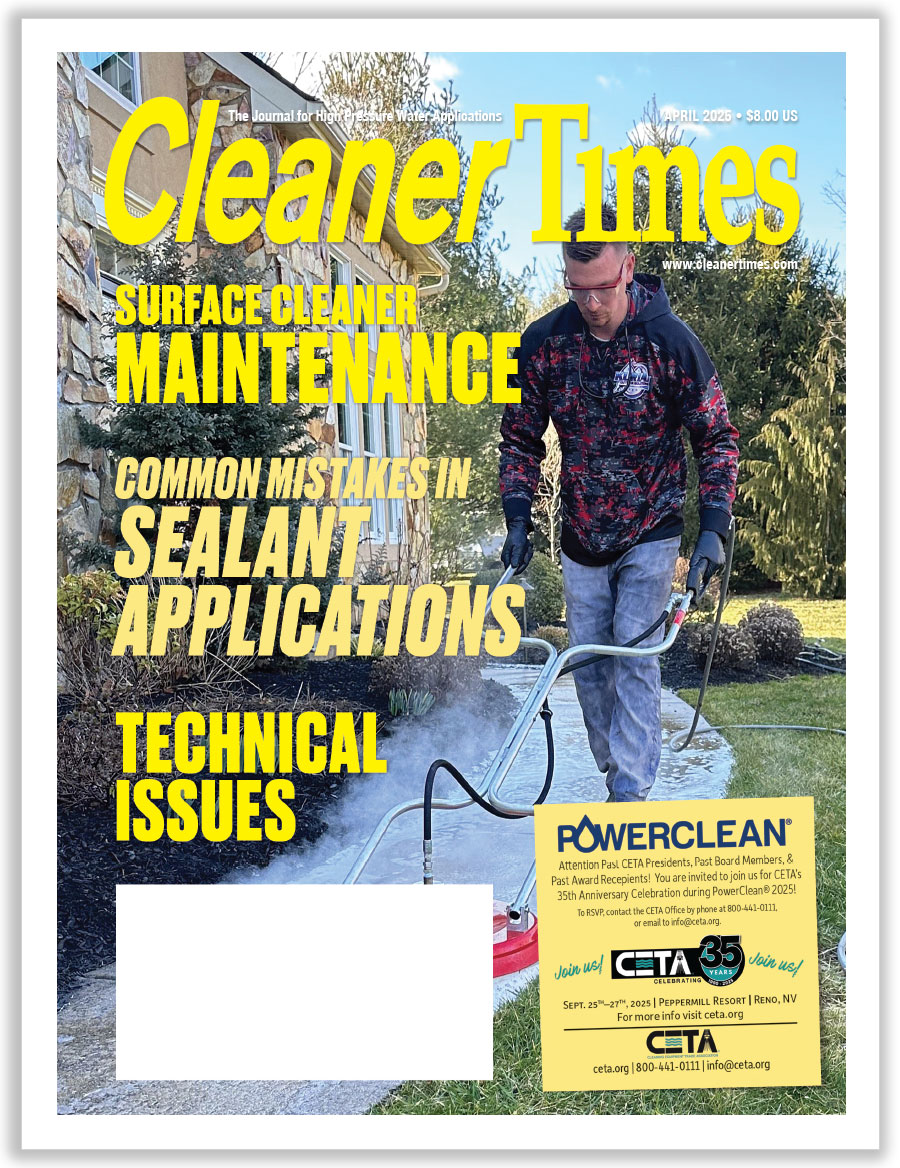
Financial: Self-Insurance 101
By Mark E. Battersby / Published July 2016

It should come as no surprise to anyone in this day and age that many pressure cleaning businesses are facing constantly rising business insurance premiums. After all, as the economy slowly improves, insurers have begun raising business insurance premiums while reducing available insurance coverage.
One increasingly popular option for some businesses is a “self-insurance” program, or insuring its own risks. If self-insurance is right for your pressure cleaning business, these are some of the potential benefits:
• Lower insurance premiums
• Better insurance coverage
• More reliable insurance
• A safer workplace
• An improved bottom line
Self-Insurance Basics
Self-insurance allows a pressure cleaning business to lower ongoing premium expenditures and to take control of low-level risks. This is achieved by the waterjetting/pressure washing operation or business becoming its own insurer for either a certain level of risk or certain types of risk.
Obviously, some risks cannot be self-insured without the approval of state regulators. Workers’ Compensation can, for example, be self-insured, but must meet certain guidelines and usually requires approval. Mandatory auto liability insurance can be self-insured only by meeting state requirements.
For some pressure cleaning businesses, however, self-insurance makes great sense. After all, why pay an insurer when you can pay yourself? Plus, in most instances the business is not insuring the entire risk. Instead it is self-insuring only a portion of the risk.
Assuming the Insurer Role
Self-insurance usually requires a pressure cleaning business to set aside funds to pay losses as well as purchasing high-level “excess” policies to ensure that the funds set aside will not be exceeded by higher-than-expected claims.
Budgets for insurance can be established knowing that funds set aside for insurance are the maximum amount that the self-insurer will have to spend. If claims costs are less than expected, the pressure cleaning business will save money and increase profits.
Self-insurance can also help a contractor, dealer, distributor, or manufacturer obtain insurance coverage that would not otherwise be available. Since a self-insurer pays its own claims, policies can be tailored to its own needs with less impact from changes in the traditional insurance market.
Premiums for insurance for various types of business risks, such as property damage or liability, are generally deductible as business expenses. No deduction is, however, permitted for any amounts paid for “prepaid” expenses, including prepaid insurance. Prepaid expenses generally fall under the heading of more permanent improvements and must be capitalized.
Assuming Risk
Examples of business insurance commonly self-insured include the following:
Workers’ Compensation: Some states allow businesses to become self-insured without the need for a licensed insurer. However, the criteria imposed by states in order to qualify as a self-insurer normally include the acquisition of excess insurance as well as the submission of a bond or other form of collateral equal to the amount of potential liability. Both of these requirements are to ensure that funds will always be available to pay injured workers in the event of the self-insurer becoming insolvent or unable to meet its financial obligations to pay losses.
Employee Benefits: Under federal legislation passed in 1974 known as ERISA, employers are allowed to step away from the state-regulated benefit programs and self-insure their employee benefit programs. The advantages are significant as, unencumbered by individual state regulation, employers can design their own benefit plans to suit their workforce.
Commercial Automobile Liability: Commercial automobile liability is often self-insured and is regulated by individual states. Because of the potential catastrophic claims that can arise from an accident, self-insuring often requires the pressure cleaning business to purchase “excess” insurance coverage as protection from large numbers or amounts of losses.
Commercial General Liability: Liability can be attractive to self-insurers because potential losses can be significant, creating a greater interest in loss prevention. Due to the fact that claims are not normally settled for a number of years, a business may see an enhanced cash flow as funds can be temporarily diverted to other areas of the operation.
Pros and Cons
Self-insurance is by no means appropriate for every business, and a feasibility study and/or professional assistance should play a significant role in determining the suitability of self-insurance. Prior to performing such a study, a prospective self-insurer should be aware of both the advantages as well as the disadvantages of adopting the self-insured approach.
The advantages to a self-insurer can be summarized as follows:
Cost savings: The principal aim of self-insurance is to improve a business’s profits by reducing premium costs.
Risk mitigation: The self-insured business structures the type of coverage and level of risk it is willing to assume.
Plan Design: Self-insurance plans and risk transfer programs can often be modified to provide coverage that commercial insurers are unable to provide.
Protection from price fluctuations: The self-insured can stabilize risk management costs.
Cash flow: The self-insured can invest the funds budgeted for insurance, structuring maturities to meet cash flow needs. What’s more, if a pressure cleaning business is paying its own claims, damage to property can be dealt with quickly and efficiently with losses to earnings reduced.
The Downside to Self-Insuring
The major disadvantages to self-insuring are the exposure to risk and the possibility that the program will end up costing more than if traditional insurance had been purchased. While self-insurance should be viewed as a long-term strategy as some of the advantages may take time to pay dividends, the potential disadvantages of self-insurance can be summarized as follows:
Exposure: A self-insurer can suffer from poor claims experience. However, any potential downside can be limited by reinsurance. Naturally, if the program continues to show poor results, then the cost of the reinsurance will increase and self-insurance may ultimately become uneconomic.
Administrative Burden: Self-insurance requires establishing systems to settle and monitor claims as well as negotiating with other service providers, such as excess insurers. However, this function is often out-sourced to a professional administrator known as a Third Party Administrator (TPA).
Taxes: As with most business expenses, expenses such as self-insurance costs are tax deductible. However, losses can only be taken as a tax deduction when they are paid rather than incurred. This issue can affect a pressure cleaning business’s cash flow in the short-term.
Workers’ Compensation: Claims are paid out over many years, but often the self-insuring business is able to meet claims by purchasing an annuity policy on behalf of the claimant and achieve an immediate tax deduction.
A Captive Insurance Company to Call Your Own
Modern captive insurance began in Bermuda in the early 1960s, and was formalized in the late 1970s, with a medical malpractice captive for Harvard University. In recent years, the growth of captive insurance and related risk transfer mechanisms has boomed, driven relentlessly by businesses seeking to better manage insurance needs. While captives were initially used only by large multinationals, the concept has caught on, and today captives are found in a wide variety of business endeavors.
A “captive” is an insurance company that insures the risks of its owner, affiliated businesses, or a group of businesses. Captives allow pressure cleaning contractors, distributors, and manufacturers to structure the type and amount of risk they wish to retain. In fact, a captive insurance arrangement may include risks that are currently uninsurable or insurable only at prohibitive costs. Risks that are not retained can be covered in the reinsurance market.
Insurance companies (of all sizes) operate under different tax rules than other companies. The U.S. Tax Code recognizes that insurance companies receive premium dollars up front, but may not pay out claims (associated with those premiums) for many years. Therefore, U.S. tax law allows insurance companies more generous current deductions.
While some tax advantages may be established through a properly planned captive, achieving such advantages should not be a key goal for any pressure cleaning business owner or manager. Fortunately, some states allow individual companies and groups to band together to obtain difficult to purchase types of coverage or, for more sophisticated and larger companies, the chance to establish separate companies as new profit centers.
Group Insurance
The IRS long ago concluded that a captive insurance company formed by a “significant number” of unrelated insureds, each having no more than 15 percent of the total risk, was a valid insurance arrangement. The IRS also went on to establish other factors that they expect to see in a bona fide transaction.
This 1991 IRS ruling paved the way for franchisees, industry groups, and other associations to form a captive insurance company with the protection of an IRS safe harbor ruling. Obviously, there are other benefits, but those would need to be explored with an insurance professional.
Self-insurance can lead to significant savings for some pressure cleaning businesses. There are, of course, many considerations that need to be made regarding risk shifting, risk distribution, and the deductibility of captive premiums for tax purposes. While recent IRS rulings have made captive insurance arrangements somewhat more complex, the associated benefits of self-insurance and captive insurance companies continue to outweigh their negative aspects.




